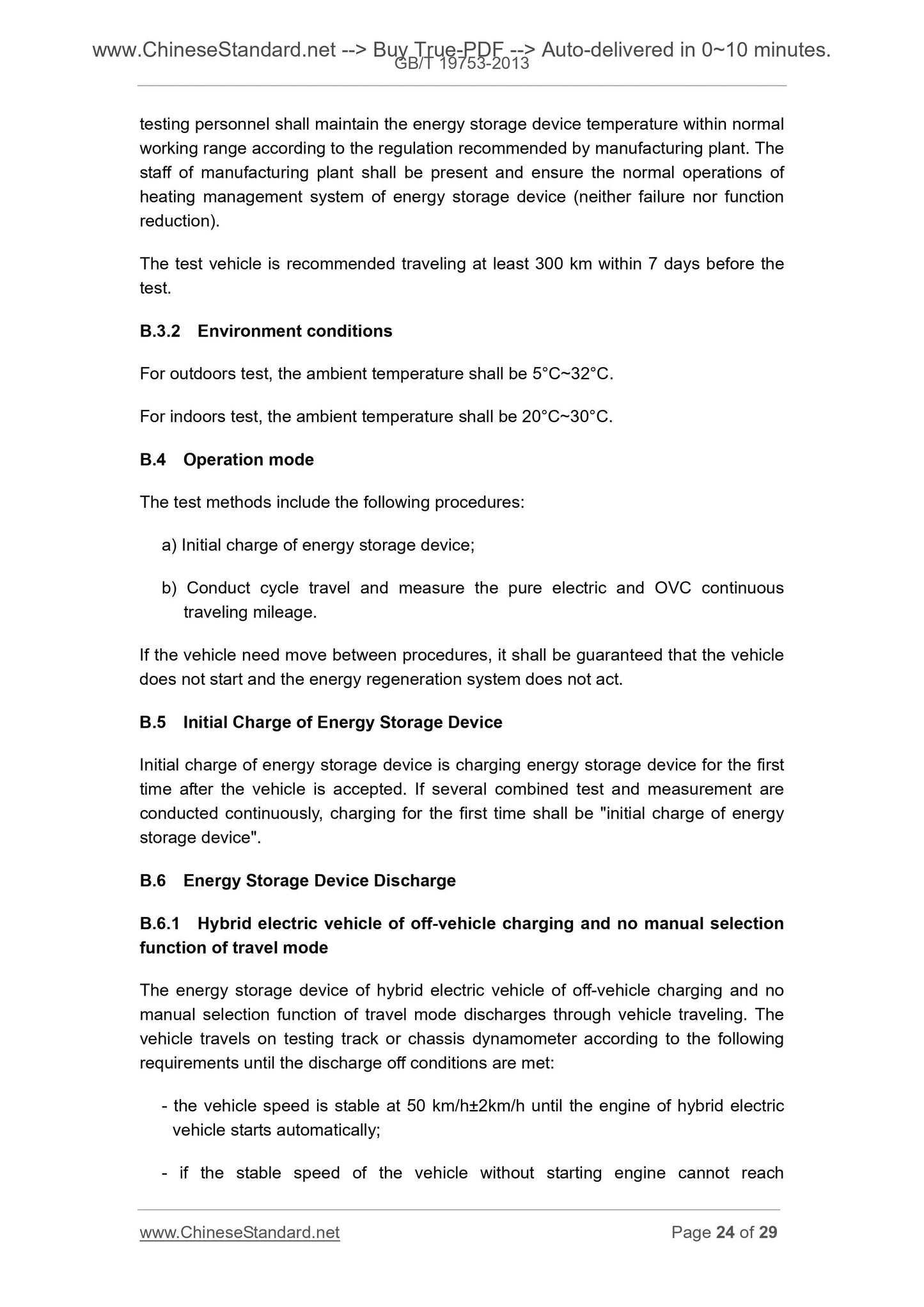1
/
of
12
PayPal, credit cards. Download editable-PDF and invoice in 1 second!
GB/T 19753-2013 English PDF (GB/T19753-2013)
GB/T 19753-2013 English PDF (GB/T19753-2013)
Regular price
$140.00
Regular price
Sale price
$140.00
Unit price
/
per
Shipping calculated at checkout.
Couldn't load pickup availability
GB/T 19753-2013: Test methods for energy consumption of light-duty hybrid electric vehicles
Delivery: 9 seconds. Download (and Email) true-PDF + Invoice.Get Quotation: Click GB/T 19753-2013 (Self-service in 1-minute)
Newer / historical versions: GB/T 19753-2013
Preview True-PDF
Scope
This Standard specifies the test methods for energy consumption of light hybridelectric vehicles that are equipped with spark ignition engine or compression ignition
engine.
This Standard is applicable to Category-M1, M2 and N1 hybrid electric vehicles
equipped with spark ignition engine or compression ignition engine of which the
maximum total mass is not exceeding 3.5t.
Basic Data
| Standard ID | GB/T 19753-2013 (GB/T19753-2013) |
| Description (Translated English) | Test methods for energy consumption of light-duty hybrid electric vehicles |
| Sector / Industry | National Standard (Recommended) |
| Classification of Chinese Standard | T47 |
| Classification of International Standard | 43.080.01 |
| Word Count Estimation | 20,272 |
| Older Standard (superseded by this standard) | GB/T 19753-2005 |
| Quoted Standard | GB 18352.3-2005; GB/T 19233-2008; GB/T 19596 |
| Regulation (derived from) | National Standards Bulletin 2013 No. 27 |
| Issuing agency(ies) | General Administration of Quality Supervision, Inspection and Quarantine of the People's Republic of China, Standardization Administration of the People's Republic of China |
| Summary | This standard specifies test methods equipped with spark-ignition engines or equipped with compression ignition engines for light hybrid electric vehicle energy consumption. This standard applies to equipment with spark-ignition engine or a compression ig |
Share























